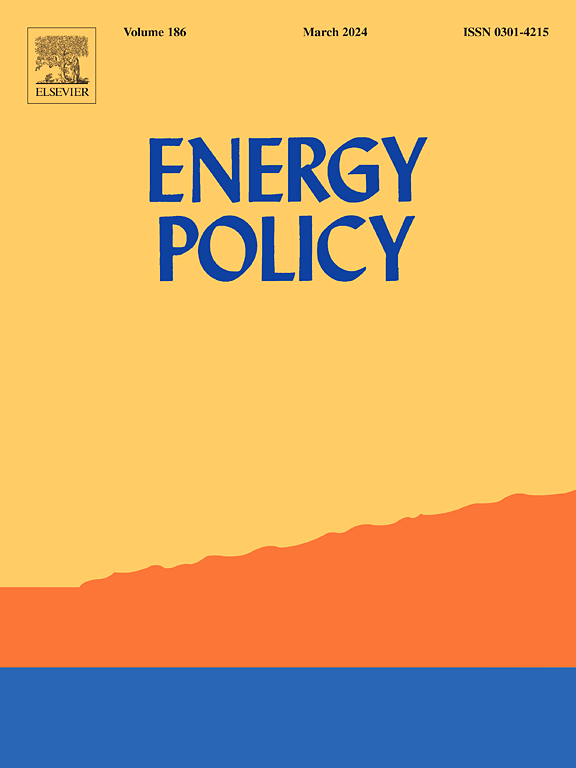Multi-agent simulation of policies driving CCS technology in the cement industry
IF 9.2
2区 经济学
Q1 ECONOMICS
引用次数: 0
Abstract
Carbon capture and storage (CCS) technology has the potential to accelerate the cement industry's transition to low carbon, but it is still in the early demonstration stage. Strong policies are needed to promote its large-scale development. However, previous research was inadequate to identify the intertwined motivating factors behind the policy, which led to the policies being less effective. Therefore, this paper aims to explore the impact of policy on the diffusion of CCS in the cement industry by delving into the interaction mechanisms among agents, including the government, cement companies with and without CCS, CCS technology, and downstream sectors of the cement industry. An agent-based model is developed to simulate the effects of various policy measures on multi-agents’ behaviors and to examine CO2 emissions, costs, and CCS penetration rates. The results indicate that CCS diffusion will start in 2026, and a diffusion rate of 45.2% will be achieved by 2060, considering China's 30% investment subsidy ratio. The policy with the highest rate of CCS diffusion (62%) and the highest rate of emission reduction (87%) by 2060 provides for a 30% investment subsidy combined with a full quota charge. The 10% investment subsidy policy has the lowest unit cost of abatement (133 CNY/tCO2).
水泥行业CCS技术驱动政策的多智能体模拟
碳捕集与封存(CCS)技术具有加速水泥行业向低碳转型的潜力,但目前仍处于早期示范阶段。需要强有力的政策来促进其大规模发展。然而,以往的研究不足以确定政策背后错综复杂的激励因素,导致政策效果不佳。因此,本文旨在通过研究政府、有CCS和没有CCS的水泥企业、CCS技术以及水泥行业下游部门等主体之间的互动机制,探讨政策对CCS在水泥行业扩散的影响。开发了一个基于主体的模型来模拟各种政策措施对多主体行为的影响,并检查二氧化碳排放、成本和CCS渗透率。结果表明,考虑到中国30%的投资补贴比例,CCS的扩散将从2026年开始,到2060年将达到45.2%的扩散率。到2060年,CCS扩散率最高(62%)和减排率最高(87%)的政策提供了30%的投资补贴和全额配额收费。10%投资补贴政策的单位减排成本最低(133元/吨)。
本文章由计算机程序翻译,如有差异,请以英文原文为准。
求助全文
约1分钟内获得全文
求助全文
来源期刊

Energy Policy
管理科学-环境科学
CiteScore
17.30
自引率
5.60%
发文量
540
审稿时长
7.9 months
期刊介绍:
Energy policy is the manner in which a given entity (often governmental) has decided to address issues of energy development including energy conversion, distribution and use as well as reduction of greenhouse gas emissions in order to contribute to climate change mitigation. The attributes of energy policy may include legislation, international treaties, incentives to investment, guidelines for energy conservation, taxation and other public policy techniques.
Energy policy is closely related to climate change policy because totalled worldwide the energy sector emits more greenhouse gas than other sectors.
 求助内容:
求助内容: 应助结果提醒方式:
应助结果提醒方式:


